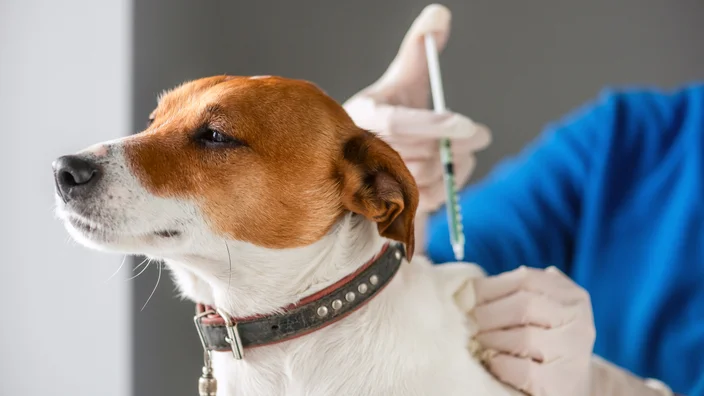You ever find your dog begging for one too many treats or lying around like a potato with legs? Same.
And while those habits might seem harmless in the moment, they can slowly creep up into something more serious, like diabetes.

Yeah, dogs can get it too. And once it sets in, managing it isn’t a walk in the park.
The good news? A lot of it is preventable if we pay attention early enough.
It Starts With What You Feed Them
If we are being truthful, food is love. And most of us show it by sneaking a few extra snacks under the table or letting them lick the plate clean.
But feeding high-carb, low-quality kibble every day doesn’t do their system any favours.
Stick to balanced meals with real ingredients. Avoid fillers like corn and wheat that can spike blood sugar.
Look for dog food where protein is the first ingredient and where fat and fiber levels make sense for your dog’s age and breed.
Homemade meals? Great idea, but make sure you know what you’re doing. Tossing random veggies and meat together can be risky without proper nutrition guidance. Chat with your vet before going full DIY.
Keep Them Moving, Even When They Don’t Want To
Some dogs are natural couch potatoes, especially when they hit their golden years. Others zoom around like they’ve had five cups of coffee. Either way, movement matters.
A simple fifteen to thirty minute walk daily helps more than you’d think. It keeps their weight in check and supports insulin function.
Play fetch in the yard, toss a toy down the hallway, or go sniffing in the park, whatever keeps them off the couch.
If you’ve got a senior dog with joint issues, swimming can be a gentle alternative. Doesn’t have to be Olympic laps either. A few paddles in a kiddie pool or pond will do.
Know The Early Signs Before It Gets Serious
Spotting issues before they snowball is where we all win. So what should you keep an eye out for?
If your dog starts drinking water like there’s no tomorrow, peeing more often, losing weight even though they’re eating well, or suddenly acting off, that’s a red flag. Don’t write it off as just aging or “weird behaviour.”
One foster mum I know had a spaniel who was suddenly wetting the bed and acting spacey.
Turns out, it was early diabetes. Catching it when they did made all the difference. The pup’s doing great now with daily routines and managed care.
Get Ahead With Regular Vet Visits
This one’s boring but necessary. Routine vet checks help you stay in the loop about your dog’s blood sugar, weight, and overall health.
Especially if your dog’s already in the risk zone, think older, overweight, or certain breeds like poodles or dachshunds.
Ask your vet about glucose checks or even simple blood panels once a year. Not everything shows up in poop or energy levels. Sometimes things simmer quietly under the hood.
Also, don’t sleep on dental health. Weirdly enough, gum infections and dental neglect can add to inflammation and even make diabetes worse. So yeah, brush those chompers or at least toss in dental chews.
Understand The Breed Factor
Not all dogs are built the same. Some are just more prone to blood sugar issues. Samoyeds, schnauzers, and beagles are among those who’ve got a higher chance of developing diabetes.
Doesn’t mean you panic if you have one. It just means you watch a little closer. A schnauzer with a sweet tooth (yes, that’s a thing) might need different treats or a stricter routine than, say, a border collie that runs marathons for fun.
Set Up A Routine And Stick With It
Dogs thrive on routine. They know when it’s breakfast time, walk time, and snack o’clock. Keeping meal times consistent helps regulate their system.
Erratic feeding patterns can mess with their digestion and energy, which doesn’t help when you’re trying to avoid diabetes.
Keep treats to a minimum, or better yet, use veggies like cucumber slices, plain pumpkin, or cooked green beans.
Not all dogs love them at first, but with a bit of creativity (and maybe a drizzle of chicken broth), they’ll come around.
Watch That Waistline
Obesity is one of the biggest culprits when it comes to canine diabetes. You don’t have to wait until your dog looks like a sausage with legs. Check for things like difficulty standing up, laboured breathing after a short walk, or that pouchy area above their tail.
And don’t just go by weight on the scale. Body condition matters more. Can you feel their ribs without pressing too hard? Do they have a waist from the top view? If not, it might be time to adjust the portions and treats.
Don’t Forget About Mental Health
Anxious dogs, bored dogs, and those stuck in tight routines with no fun can develop stress-related behaviours. And constant stress can impact physical health too, including hormones and insulin response.
Give them puzzles, scent games, or just one-on-one cuddle time. A stimulated brain can be just as important as a strong body
Staying ahead of diabetes doesn’t have to be complicated or overwhelming. It’s just a mix of paying attention, keeping things balanced, and not waiting until things go sideways.
You’ve got this. And if you ever feel like you’re not doing enough, just remember, it’s the small daily choices that matter in the long run. You don’t have to be a vet, just a caring and present dog parent.
Got your own routine or tips that have helped? Or still figuring it out like the rest of us?